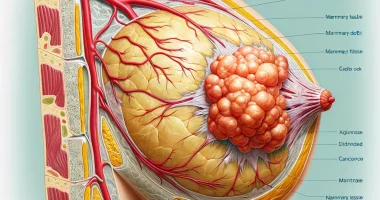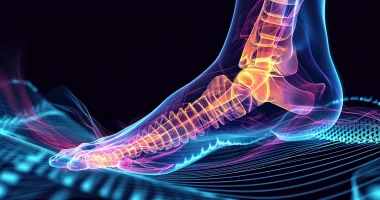Thyroid cancer
What is thyroid cancer?
Thyroid cancer is a cancerous disease in which a malignant tumor is located in the structure of the thyroid gland. The formation develops due to the oncologic transformation of epithelial cells of the gland (follicular or parafollicular).
Among all oncologic pathologies, cancer of the thyroid gland is about 1.5%. Among patients, women over 40 years of age prevail, in whom this form of oncology occurs almost four times more often than in men.
In primary cancer, the tumor is initially formed in the gland’s structure. In secondary cancer, the tumor penetrates it by lymphatic or hematogenous pathways from other organs (this condition is considered metastasis).
Stages
In the course of the primary disease, four stages are distinguished:
- The former, if the tumor is in the thickness of the gland, does not deform its capsule.
- Stage 2A. It is diagnosed if the mass deforms the gland or multiple nodules are detected without invasion into the capsule.
- Second B stage. In this case, the lymph nodes on one side of the gland are affected by metastases.
- Stage 3. It is established if the tumor penetrates the capsule and exerts pressure on nearby tissues or metastases are detected in the lymph nodes on both sides.
- Stage four. Invasive tumor growth into surrounding tissues or metastasis to distant organs is detected.
The prognosis depends on the degree of malignancy of the tumor and the stage of the disease. With early diagnosis, a relatively benign course, and a timely start of treatment, the probability of recovery exceeds 80%.
Symptoms
In the early stages, thyroid cancer is symptomless and is diagnosed accidentally, usually during preventive ultrasound examinations of the organ. Some patients self-detect nodular masses on the neck. Due to the propensity of certain forms of neoplasia to early metastasis, the first manifestation of pathology may be an increase in regional lymph nodes.
As thyroid cancer progresses, the signs and symptoms of the disease increase. As the tumor increases in size, it can squeeze surrounding tissues, causing the following disorders:
- difficulty swallowing;
- a feeling of pressure in the neck;
- shortness of breath, feeling short of breath;
- pain in the neck area;
- soft tissue swelling;
- sore throat;
- hoarseness of voice;
- superficial cough.
Large tumors deform the neck, penetrate the structures of the larynx, and damage blood vessels and nerves.
Causes of thyroid cancer
Neoplasms are formed, as a rule, with the combined effect of several oncogenic factors. The following situations may be the causes of thyroid cancer development:
- Benign masses in the structure of the gland (adenomas);
- Hyperplasia of the “thyroid” against the background of a decrease in its function;
- increased inflammation in the body;
- neuroendocrine disorders;
- exposure to ionizing radiation;
- unfavorable heredity (thyroid pathologies and cancer in blood relatives).
Taking into account the etiology, distinguish radio-induced thyroid cancer (which occurs under the influence of radiation) and sporadic (due to other causes).
Diagnosis of thyroid cancer
If there are suspicious signs of thyroid cancer, one should consult an endocrinologist. If, during the initial examination, there are suspicions of neoplasia, the patient is referred to an oncologist.
Diagnosis begins with a conversation. In the consultation process, the doctor collects an anamnesis, determines the presence of risk factors for oncological pathologies, and analyzes complaints. Physical examination involves a palpatory examination of the thyroid gland. The organ’s function is assessed according to the results of laboratory tests for thyroid hormones.
The structure of the gland is examined during ultrasound. Ultrasound diagnosis allows primary differentiation of the thyroid gland’s benign and malignant nodular formations. The method allows you to visually assess nodules’ size, location, shape, and degree of tuberosity. With ultrasound, elastography determines their density, which helps to make preliminary conclusions about the nature of the formations.
If, according to the diagnostic results, thyroid pathology is highly likely to be cancer, the patient undergoes a fine-needle biopsy. During the procedure, tumor fragments are obtained for histological analysis, allowing an accurate diagnosis and choosing the optimal treatment tactics.
Cancer staging is based on the results of a comprehensive examination of the whole body. The patient takes a general and biochemical blood test and undergoes imaging diagnostic procedures (CT, MRI, X-ray), in which vital organs and lymph nodes are examined.
Thyroid cancer treatment
Therapeutic tactics are selected on a personal basis, taking into account the form and stage of cancer, the degree of malignancy, the number, localization, and spread of tumors, as well as the patient’s general condition. Comprehensive treatment for thyroid cancer may include the following methods:
- Surgery. It is the primary way of treating thyroid cancer, aimed at removing malignant cells as completely as possible. As a rule, not only the tumor is removed, but also the entire gland. Invasive formations are eliminated together with the adjacent tissues. In some cases, regional lymph nodes are subject to removal. After surgery, the patient is prescribed hormone replacement therapy to compensate for lost thyroid function.
- Targeted therapy. It involves using drugs that block the vital activity of cancer cells. In thyroid oncology, it is used in the complex treatment of severe forms of cancer with metastases to distant organs.
- Radiation therapy. The procedure involves exposure of the problem area to ionizing radiation. The method is used in cases when it is impossible to perform surgery and for the prevention and treatment of recurrences.
- Chemotherapy. Chemotherapy is rarely used for thyroid cancer, mainly in combination with radiation therapy for aggressive tumors.
- Radioiodine therapy. The method involves ingesting radioactive iodine, which accumulates in the remaining malignant cells after surgery and destroys them.
- Palliative care. It is required for patients with inoperable forms of oncological pathology to prolong and improve their quality of life.
The accuracy of modern diagnostics and a personalized and comprehensive approach to therapy allow for achieving stable remission for 10-15 years and more. For early diagnosis of possible relapse, patients regularly undergo screening-targeted examinations.
All these treatment options are available in more than 850 hospitals worldwide (https://doctor.global/results/diseases/thyroid-cancer). For example, Total thyroidectomy is performed in 14 clinics across Turkey for an approximate price of $4.7 K (https://doctor.global/results/asia/turkey/all-cities/all-specializations/procedures/total-thyroidectomy).
Prevention
To reduce the risks of developing thyroid cancer, you should avoid exposure to provoking factors (toxic substances, radiation, bad habits). It is desirable to regularly monitor the organ’s condition using laboratory and instrumental methods. Persons at risk of thyroid cancer should be treated promptly for benign masses.
Rehabilitation after surgical treatment
The specific recommendations of the rehabilitation period depend on the method of intervention. Postoperative follow-up lasts 2-3 days.
After discharge, taking care of the postoperative wound and visiting the doctor for check-ups is necessary. Until the stitches are removed, it is undesirable to wet the neck area; the wound should be protected from water with a bandage. In the next month, it is necessary to limit physical labor and refuse to play sports. Thyroid function is compensated by hormone replacement therapy.



